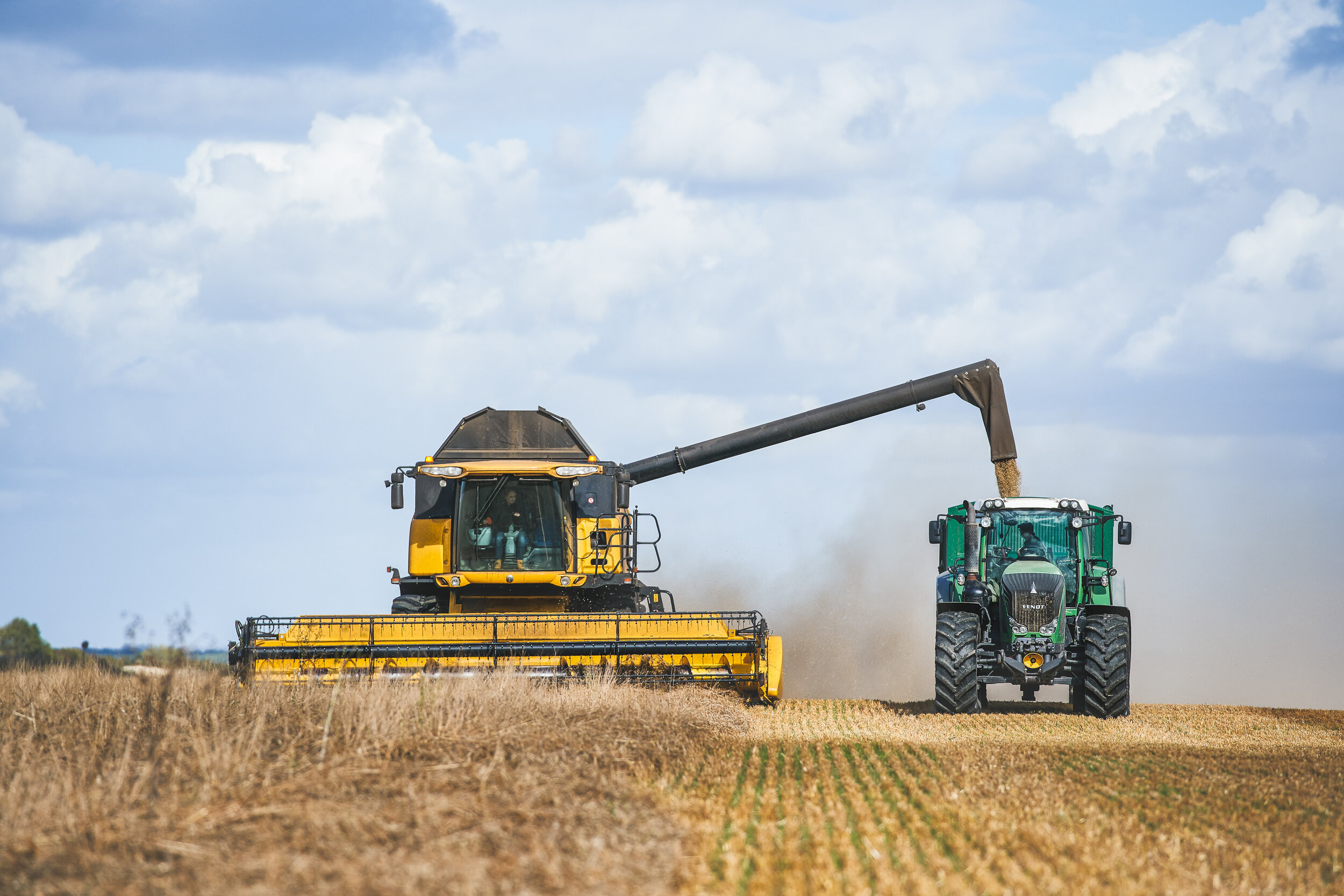
Farming in the Lincolnshire countryside.
JB Farming.
Carr Dyke Farm is an arable farming operation run by James, who was originally from Yorkshire, along with his wife Jen.
James’ parents, who are now retired, moved here in the 1990’s and together as a family they have developed the grounds of the farm and farming business into what it is today.
James and Jen are tackling the challenging tasks of modern farming together and are proud to be part of the food network feeding the nation. British farming has some of the highest standards of practices in the world, and the goal is to future-proof the farm while also taking on-board the changing policies and methods of farming with sustainability and quality in mind. James is responsible for all of the day-to-day farming tasks, with Jen (who also works off-farm) also supporting - especially at harvest by driving the machines. Together they are also developing the diversification part of the business and hope to offer opportunities for others to enjoy the farm and its surrounding area.
Carr Dyke Farm.
Carr Dyke Farm is a place of much history. Nestled in between Woodhall Spa and Metheringham, the grounds of the farm are in an area of historic interest with the Car Dike, known to be a transport link from Roman times, running close to the property. The Grade II listed farmhouse and buildings date further back than the early 1800s and the farm was formerly part of a bigger estate. In the past the farm has produced many different crops including potatoes, but today the farming business is predominantly based on growing cereal crops such as wheat and oats.
Many of the buildings that are now accommodation on the farm were previously used for its original farming practices; The Stables, for example, would have been for the draft horses working the land. Etchings on some of the original windows of the farm date back to 1802, and it retains plenty of quirk to wonder who has lived here or what it was like years ago.
Farming has changed a lot over the years – from the use of draft horses to the methods we use today. For example, we know that back in the 1960s the farm, which was much smaller then, would have employed over 35 people!
The farm today.
While the areas of modernisation enjoy much of their original character, many parts of the farm remain unchanged. Today we grow cereals such as wheat, oats, and oil seed rape, as well as beans and we have more recently grown crops such as soya in a bid to try new things in an industry that requires adaptability and progression. We also produce small crops of hay and straw on the farm. We are fortunate that the farm is based in a beautiful area full of nature, which we thoroughly enjoy each year with numerous species of birds, bats and wildlife surrounding us. We feel a strong commitment to supporting the nature on the farm and helping it flourish in balance with the necessary practices to feed the nation. Each year we continue our work with nature by evaluating those practices, and encouraging nature with the provision of tree planting. Our plan will be to increase bird boxes and bat boxes around the farm amongst others. The wood close to the farm is also an area of specific interest, and has been part of the landscape for 100s of years - we get to enjoy the smell of wild garlic and see bluebells in the spring, which makes for something very special. In addition, we became beekeepers in 2020, which has become a fascinating hobby, whilst we also enjoy our other animals on the farm.


